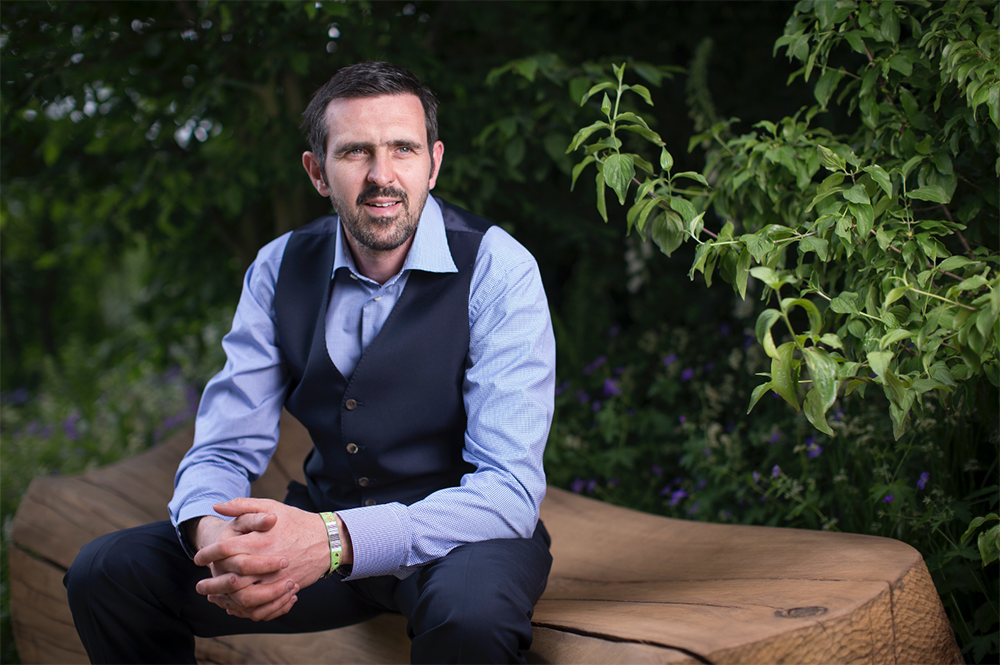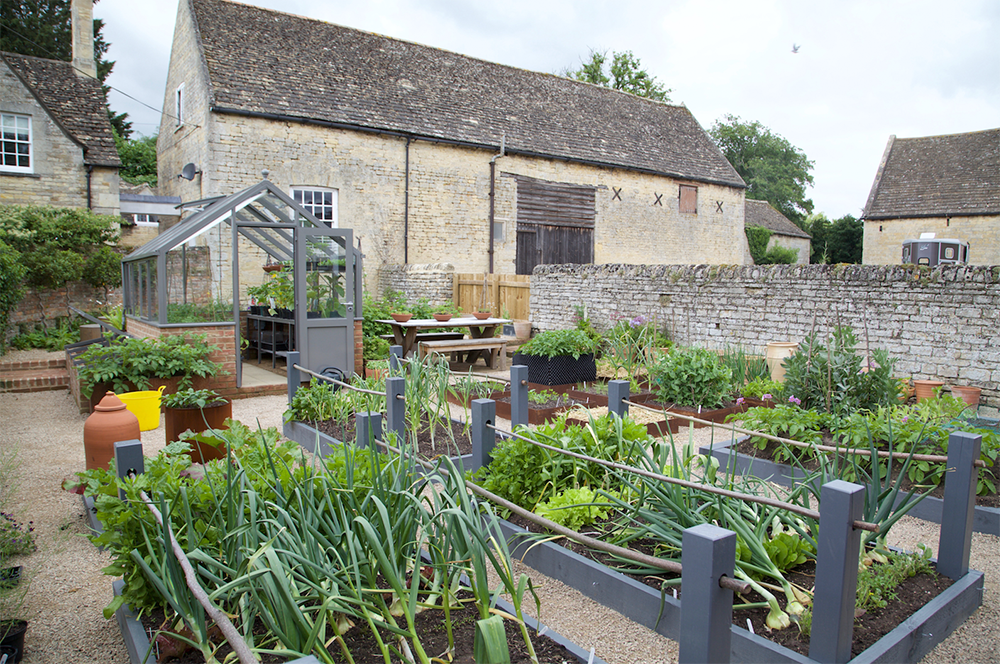
5 Tips for Growing Your Kitchen Garden with Adam Frost
Have you ever stopped to consider whether the future will be better? For every decade since the mid-20th century, futurists gazed into their crystal balls and predicted that we’d be living on the moon. We’d wear tin foil, they said. We’d have flying cars, they said. We’d be popping nutritionally complete food pills eliminating the need to shop, cook and eat whilst consigning both starvation and food wastage to history across the globe. It hasn’t happened.
Instead some families even in this country struggle to feed themselves whilst others throw perfectly good food away from their larders, cupboards and refrigerators. Meanwhile our diets are poorer than ever, food intolerances are rife, obesity levels have reached unprecedented levels and our food arrives via increasingly complicated supply chains and everything we eat is the subject of industrialised processing.
Supermarkets and Groceries 33p in every pound spent on food in the UK spent in Tesco, which has a 27.8% market share of all supermarkets. Its three main competitors, accounting for a further 15.8% (Sainsbury’s), 15.3% (Asda) and 10.4% (Morrisons) share of the supermarket sector; just four companies controlling nearly 70% of all our £28bn food and grocery supermarket shopping.
Seasonality no longer applies; we can eat strawberries in January and game in June. The farming industry has had to resort to industrialised processes to keep us fed, whilst food producers have to incorporate preservatives, emulsifiers, antioxidants, bulking agents and flavour enhancers.
A reward for convenience? Of course, being able to simply pick groceries up from the supermarket means we now have plenty of spare time as a society. But that’s time which is increasingly spent in a sedentary state; in front of TV screens, smartphones and tablets or working longer hours in front of your work computer. In short, our diets are worse than ever, our activity levels are lower than ever and our stress levels are through the roof.
If only there were a way to address all three issues. To enable us to eat healthily, get some fresh air, relax and enjoy achieving something more constructive. We can think of nothing better to address all of the above than curating your own kitchen garden.
To be fair, we’re perhaps overstating matters. There’s no single silver bullet to solve all of the above problems in a single fell swoop. For a start we don’t all have the space and large country homes no longer employ permanent staff – as was the case in years gone by – and we’re all time poorer by virtue of the increasing demands of our lifestyles.
A Happy Medium
But there’s always a happy medium. Even if you can’t dedicate space, time and energy to creating a full kitchen garden, there’s always a compromise to be achieved between growing some of your own food and enjoying the sense of achievement that brings. From herbs on a window sill or tomatoes in a pot or growbag, to a single raised bed, or a few fruit trees in a corner of your garden. So what are the questions you need answering if you’re considering getting your growing going?
We’ve sought the advice of Adam Frost, who moved to his Domesday-era stone Barnack patch in 2016 but has lived and worked in the area since he moved here to work with Geoff Hamilton at Barnsdale Gardens when he was in his 20s. With in the three acre garden, which the broadcaster is gradually renovating, Adam has created a stunning kitchen garden. He has also been busy setting up The Adam Frost Garden School and now runs regular day or two day-courses on topics ranging from garden design, to gardening with edibles – fruit, veg and flowers.
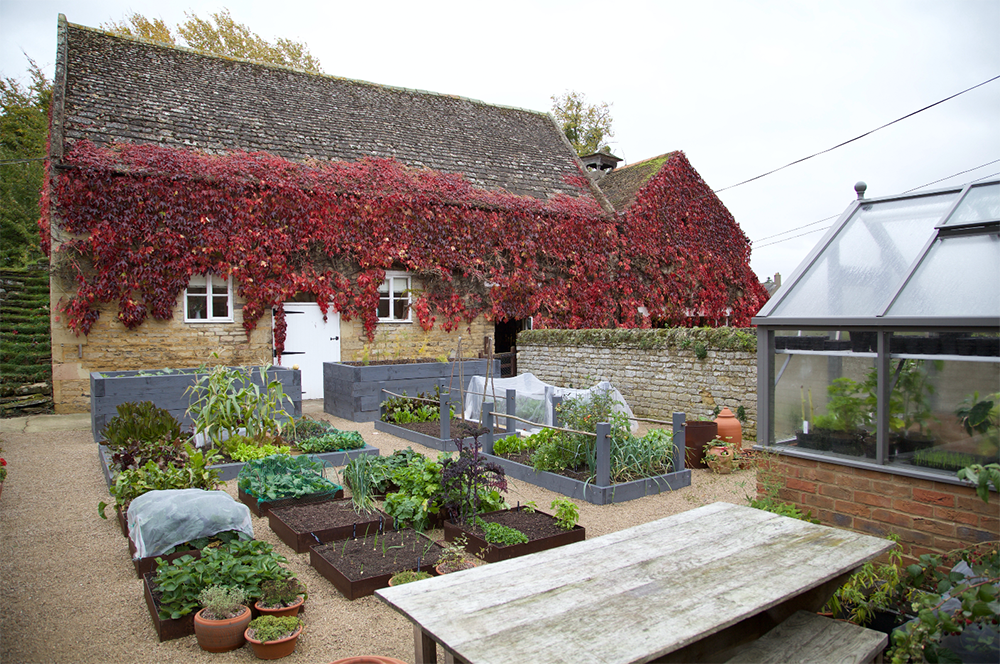
Adam’s Expertise
Our first advice is to dive in – to just get started – as any initial degree of success will encourage you to go further; like salad leaves in a pot in spring leading to strawberries in the summer and so on. And there’s no ‘wrong’ time to start your efforts.
“March and April are wonderful months to start growing your own food,” says Adam. “The hedges come alive, the birds start singing and you can get out in the veg garden and get stuck in. It’s important to make sure the area you have put aside for growing is prepped, so free from weeds and dig in some compost, or well-rotted manure to put lots of goodness into the ground. Weeding is one of those jobs all gardeners wish they didn’t have to do, but weeds appearing in spring is a good sign that the soil is warm enough to germinate seeds. In April, you can plant out chitted potatoes in the ground or in grow bags and many seeds can be sown straight into the ground as the risk of frosts has hopefully past.”
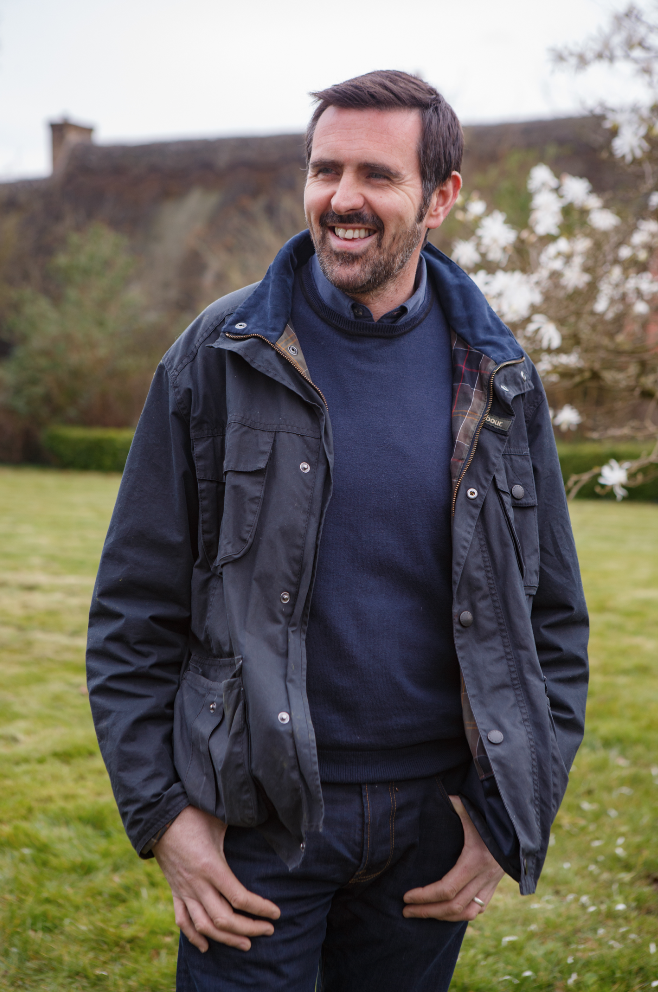
Pots and Containers
Grow bags planted up in summer are ideal for germinating herbs and salads leaves, especially in a glasshouse or sunny spot. Grow cut-and-come-again crops for a supply of homegrown leaves all summer. Pots and troughs are ideal too, but make sure they are deep enough for the veg you are growing. You don’t need any special soil for growing veg, just a good quality, peat-free compost. However, you can buy special fruit and veg soil which contains extra nutrients to help your crops to grow.
Crops like carrots, lettuce, peas and potatoes can be grown easily, as long as you take care not to let crops dry out or scorch in the summer and leave plenty of root space for crops. While fruit trees, vines and bushes can be planted in containers at any time of year, March and April are especially good months as there is plenty of time for the roots to establish.
“A really quick, easy and rewarding thing that I love to grow are micro-herbs. You sow them as normal and harvest when the first set of true leaves have grown – these appear after the first set of leaves, which are called the seed leaves. Peashoots, coriander, mustards and radishes are good ones to try. You won’t believe how much flavour they have and are great to add to salads or as a garnish!”
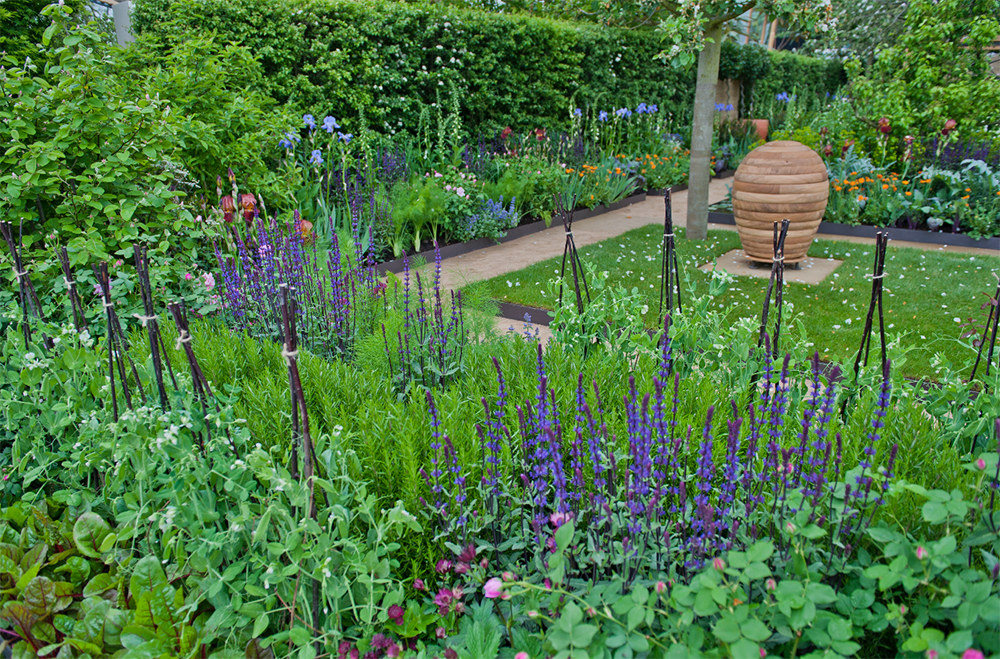
Making the most of space
Just a few beds and canny rotation of crops throughout the year are sufficient to create a productive kitchen garden that can keep feeding a family throughout the year. Crop rotation also assists with soil fertility and weed control, and helps to control pests since most pests and diseases tend to attack specific plant families. Rotating beds through the year to grow legumes, onions and root vegetables, then brassicas in the autumn and winter followed by potatoes in the spring will enable you to ensure there’s always a crop heading towards a harvest.
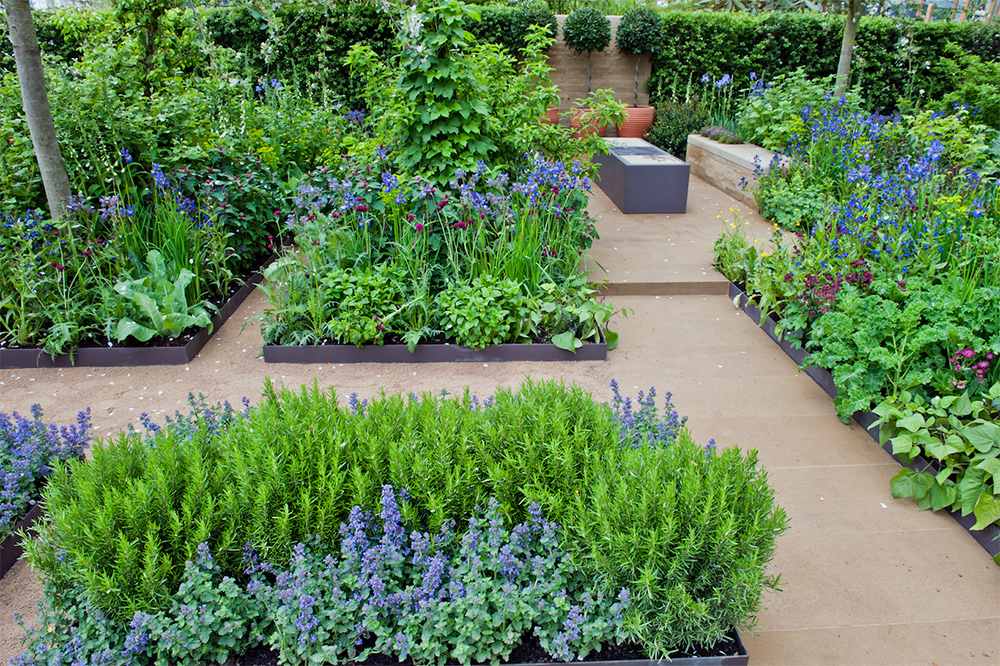
Raised beds
“One of the benefits of raised beds is that, if you don’t have the best soil in your garden, you are making space to add new soil and organic matter, which will create a good basis to start growing. For me, they’re brilliant.”
“In my kitchen garden, which I built in 2016, I’ve used half- sleepers, about 6in deep and 50mm wide to maximise space. Most importantly they’re made of pressure treated timber, which means they are less likely to rot and because they’re not as wide as full-width sleepers, there’s more space to plant.”
“I’ve used rope too, so I can put net or fleece over the top. Two other advantages are that when you drag a hose pipe around the garden, corner posts prevent you dragging a hose over your crops, and when you’ve been weeding all day, they give you a bit of a hand getting up!”

“I’ve painted my raised beds grey, which ties them into the greenhouse and creates a nice finish. I’ve also got a table and benches next to the greenhouse. as it provides as useful place to work, as well as sit and enjoy the space. Just because it’s a working garden doesn’t mean it can’t be a beautiful space too!”
Lastly, if you’re determined to maximise your available space and to yield as many crops as possible, or if you’d like to achieve the ultimate goal and become self-sufficient, professional advice is always available. Adam’s courses cover not just garden design, but planning and ways to maximise your resources, from kitchen garden to orchard to every last pot and container. Small class numbers make each course a fun and interactive experience, with emphasis on spending as much time outside, as in the classroom.
